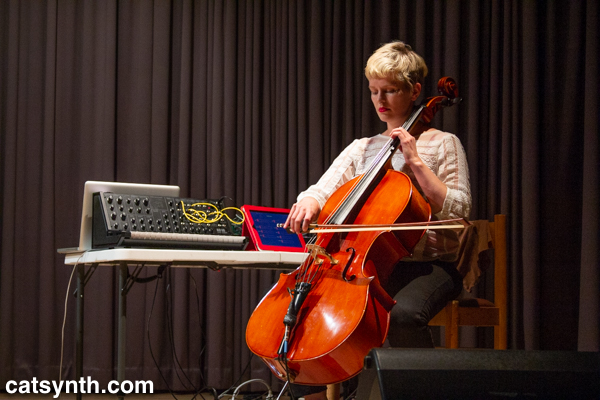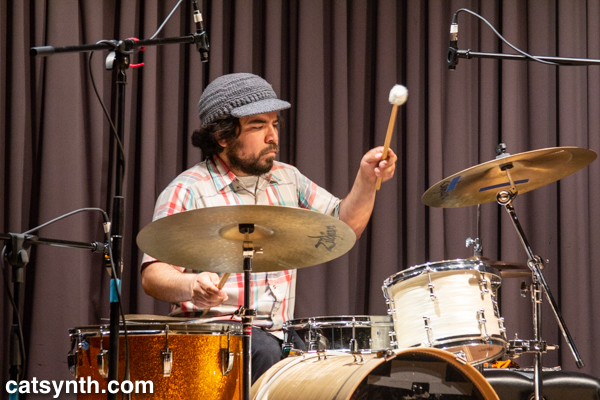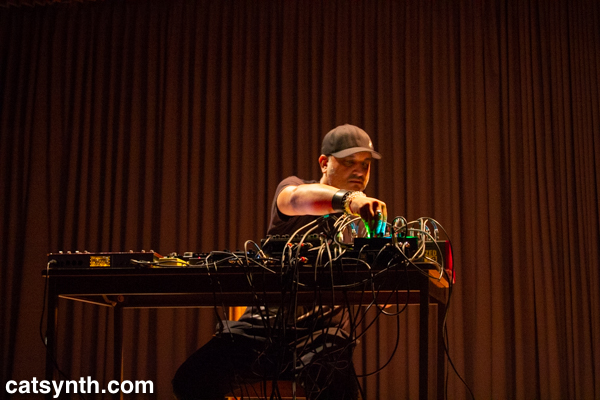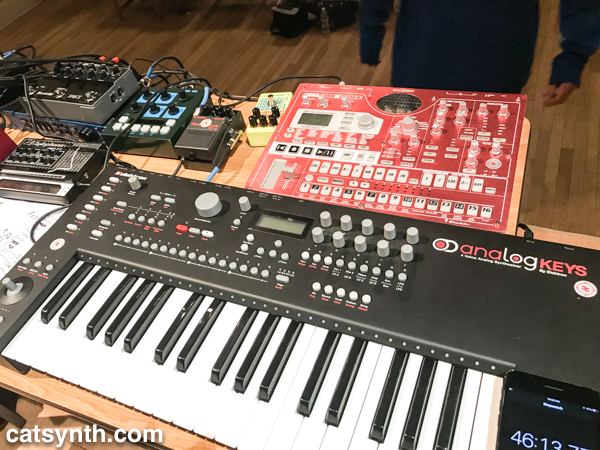The Outsound New Music Summit continued on Wednesday with a night featuring explorations of electroacoustics and noise. Once again, the two acts were quite contrasting in their interpretations of the night’s theme.
SO AR (formerly Ze Bib) is the collaboration of electronic musician and cellist Shanna Sordahl and percussionist Robert Lopez. We had the chance to meet with them ahead of the summit and shared our encounter in this video:
The set unfolded as a series of conversations between Sordahl – first on cello alone and then with electronics – and Lopez. The ups and downs in the pitches, rhythms, and intensities seemed to imply spoken language at times. This was especially true during the more staccato and percussive sections at the beginning and end of the set.

[Shanna Sordahl]
The long tone sections brought in more of the electronics – Sordahl’s rig featured a Korg MS-20 and iPad. The percussion once again seemed to match the longer tones, with extended rolls, long drum tones, and additional percussion. But there were also moments where the texture diverged, between long electronic tones and rhythmic percussion runs.

[Robert Lopez]
Even at its most intense, there was a quiet quality to the music that seemed fit with the starkness of their stage presence and the darkened hall. Even at low volume, the moments of silence stood out, with a bit of tension in the air. Space and breath are an important part of how the duo approaches their music, and this comes out strongest in the quietest sections.
X A M B U C A is a solo electronic project by Chandra Shukla. We had the opportunity to first see him perform last year with Hans-Joachim Roedellius at The Chapel in San Francisco; we were glad to see him join the lineup for this year’s Summit.

[X A M B U C A]
On a completely darkened stage, X A M B U C A delivered a set that was simultaneously rich and minimalist. There were segments of long drones cut with high-pitched sweeps, and sections of fast drum-machine runs. The styles of various sections (which segued from one to the next continuously) included fragmented dance-music patterns, elements of rock, and noise. It is, of course, hard for me not to consider electronic music without also considering the instruments used.

Shukla’s rig was anchored by an Elektron Analog Keys, along with a Korg Electribe, a Stylophone, and sundry pedals. Looking at these instruments, I can better understand how he was able to move so freely from drum patterns and hits to long tones and dense pads to distortion and noise. It was quite a dynamic performance, showing the more “experimental side” of X A M B U C A compared to what we had experienced previously.
It was a solid night, and perhaps the most “out” of the Outsound Summit shows this year, as subsequent nights embraced more idiomatic forms of musical expression. We hope to bring you those reviews over the next few days.

 We at CatSynth have had quite a few unique musical experiences this season. Today we look back at another of them. In early February, the duo Martha and Monica (Hadley McCarrol on piano and Monica Scott on cello) performed Morton Feldman’s Patterns in a Chromatic Field in its entirety.
We at CatSynth have had quite a few unique musical experiences this season. Today we look back at another of them. In early February, the duo Martha and Monica (Hadley McCarrol on piano and Monica Scott on cello) performed Morton Feldman’s Patterns in a Chromatic Field in its entirety. Waterman lived near the Brooklyn Queens Expressway, or BQE, and was inspired by the sounds of the highway as well as its history. It was part of Robert Moses’ master design for the city’s highways, and winds its way through a narrow corridor in densely packed areas of eastern Brooklyn and Queens. (See
Waterman lived near the Brooklyn Queens Expressway, or BQE, and was inspired by the sounds of the highway as well as its history. It was part of Robert Moses’ master design for the city’s highways, and winds its way through a narrow corridor in densely packed areas of eastern Brooklyn and Queens. (See 

